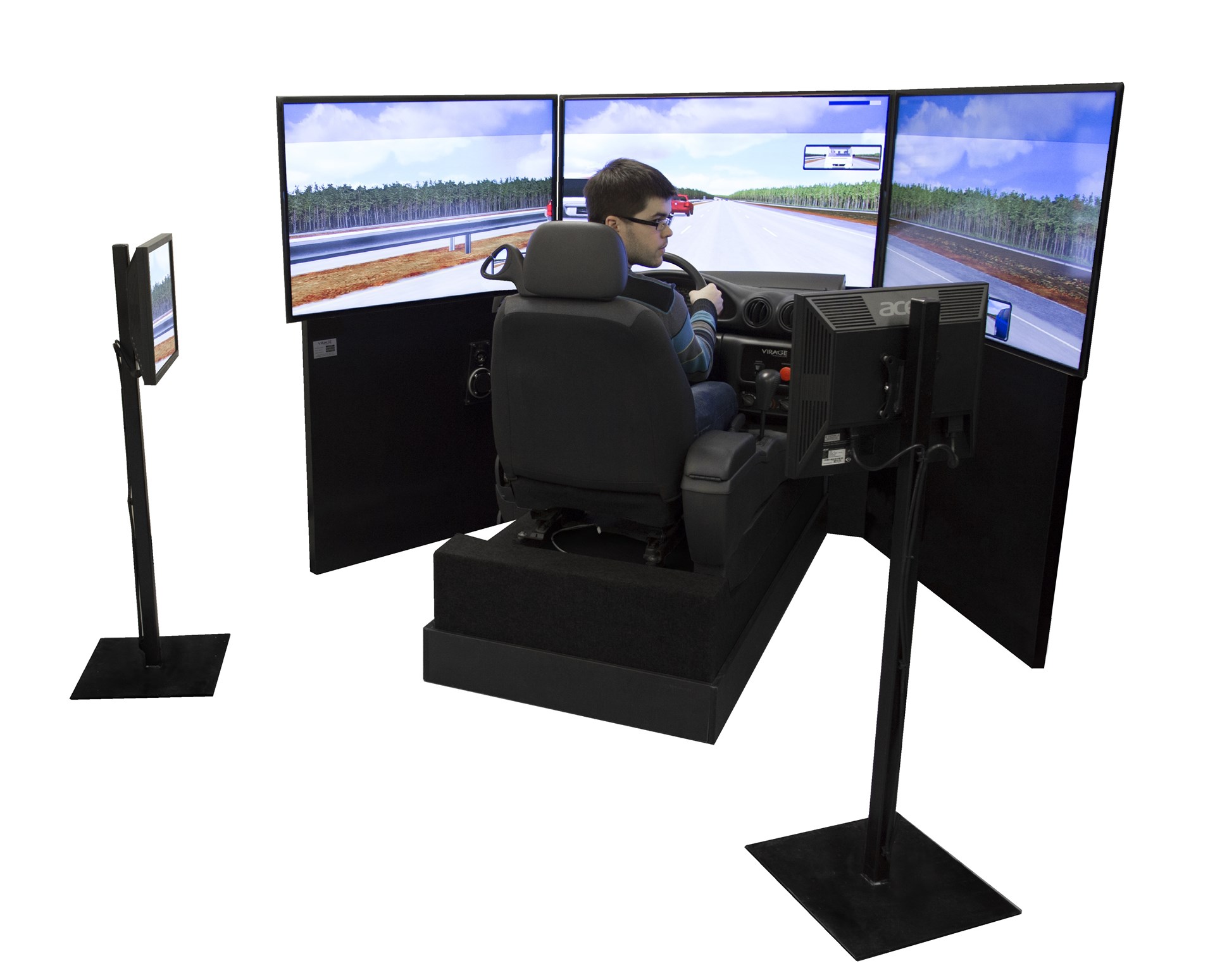
Students in Sarnia will get hands-on driver training – and learn firsthand about the perils of distracted driving – when high-tech equipment is installed at one of the city’s secondary schools next month.
Northern Collegiate Institute & Vocational School (NCIVS) is acquiring a state-of-the-art simulator that puts students in the driver’s seat of a virtual car to teach them the basics of driving in a controlled environment. The realistic look and feel of the simulator closely resembles being behind the wheel of an actual car, and will give numerous students the opportunity to navigate busy highways, deal with changing road conditions and learn that texting and driving can have tragic consequences.
The purchase of a world-class driving simulator was made possible thanks to an $80,000 contribution from Shell.
“The virtual driving simulator will provide Northern Collegiate Institute & Vocational School students with a unique opportunity for hands-on learning about road safety and vehicle maintenance thanks to this generous donation from Shell,” said Lambton Kent District School Board Director of Education Jim Costello.
“We greatly appreciate the ongoing support Shell has offered NCIVS students through the Partners Active in Resource Sharing (P.A.I.R.S.) partnership, which connects industry with students, educators and community members to facilitate learning through projects, programs and activities.”
The driving simulator employs technology developed by Virage Simulation, a Canadian company that designs and manufactures car and truck simulators that are used by driving centres, municipalities and long-haul trucking companies across North America.
“We are so excited to partner with Northern Collegiate on this initiative because road safety is of paramount importance to Shell,” said Karen Miller, Shell Manufacturing Centre General Manager. “Thanks to this incredible technology anyone who uses the simulator will learn valuable lessons that will not only help to make them better drivers, but may even save lives.”
It’s especially gratifying, added Miller, that a module that demonstrates the hazards of distracted driving will be including in the teaching tools coming to NCIVS.
It’s expected the driving simulator will be installed at the school in May. Students in senior-level transportation technology courses will test the equipment this year and it will be fully rolled out in the school’s curriculum in 2017-18.
-30-
For additional information contact:
Jane Bryce, Chair of the Lambton Kent District School Board, 519-899-2619
Jim Costello, Director of Education, 519-336-1500, Ext 31297
Heather Hughes, LKDSB Public Relations Officer, 519-336-1500, Ext. 31262
Randy Provencal, Shell Manufacturing Centre External Relations Manager, 519-481-1850
BACKGROUNDER
Teen-driver car crashes remain the leading cause of permanent injury and death in Canada, the US and almost every industrialized nation worldwide.
- Cell phones are one of the most common distractions for drivers. Drivers engaged in text messaging on a cellular phone are 23 times more likely to be involved in a crash or near crash event compared with non-distracted drivers. (Virginia Tech Transportation Institute, 2010)
- Canadian teenagers 15 to 19 years old represent less than 7% of the total population. But they represent 19% of all passenger fatalities and 19% of all serious injuries to passengers in Canada. (Canadian Motor Vehicle Traffic Collision Statistics: 2005, Transport Canada)
- 84% of distracted-driving-related fatalities in the US were tied to the general classification of carelessness or inattentiveness (National Highway Traffic Safety Administration, 2009)
- 80% of collisions and 65% of near crashes have some form of driver inattention as contributing factors (National Highway Traffic Safety Administration, 2010)
- Distracted drivers are three times more likely to be in a crash than attentive drivers (Alberta Transportation, 2011)
- Driver distraction is a factor in about 4 million motor vehicle crashes in North America each year
- Economic losses caused by traffic collision-related health care costs and lost productivity are at least $10 billion annually, or approximately 1% of Canada's GDP. (Government of Canada)